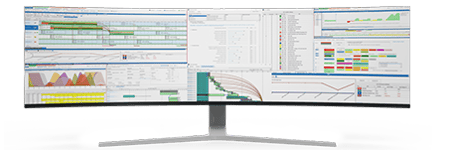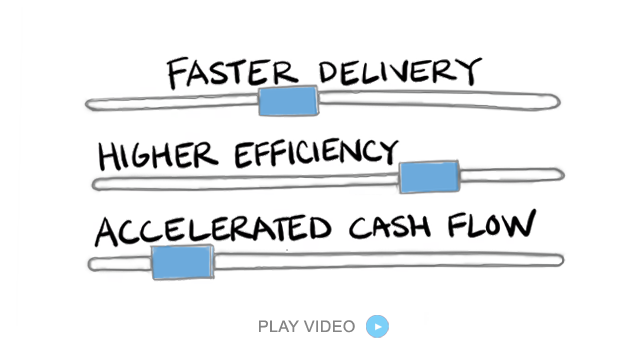How to Prioritize Orders for Maximum Efficiency in Packaging Manufacturing
Efficient production planning in packaging manufacturing hinges on the ability to prioritize orders effectively. As a Production Planner, you constantly juggle multiple variables: fluctuating customer demands, resource availability, delivery schedules, and production constraints. To stay competitive and meet tight deadlines, your prioritization strategies must align with both operational realities and strategic goals.
By integrating advanced tools like PlanetTogether with ERP systems such as SAP, Oracle, Microsoft Dynamics, Kinaxis, or Aveva, you can revolutionize your approach to prioritization, ensuring maximum efficiency and profitability.

The Importance of Order Prioritization
Effective order prioritization drives key benefits in packaging manufacturing:
Improved On-Time Delivery Rates: Meeting customer expectations for timely delivery strengthens relationships and enhances reputation.
Reduced Downtime: Organized scheduling minimizes the gaps between production runs, ensuring smooth transitions and maximizing equipment utilization.
Cost Optimization: By balancing orders with available resources, you avoid unnecessary overtime and reduce waste in materials and labor.
Flexibility: A dynamic prioritization system allows you to quickly adapt to changes, such as rush orders or delayed raw materials.

Challenges in Order Prioritization
In a complex manufacturing environment, prioritizing orders is easier said than done. Key challenges include:
Unpredictable Demand: Customer demand fluctuations make static planning tools ineffective.
Resource Constraints: Limited equipment, workforce, or materials can bottleneck production.
Competing Priorities: Deciding whether to prioritize high-margin products or large-volume orders can be a dilemma.
Interdependencies: Some orders rely on the completion of other tasks, complicating scheduling.
Without advanced systems, planners often rely on manual processes or spreadsheets, which are prone to errors and lack the real-time visibility needed to respond to dynamic conditions.
![]()

The Role of Technology in Prioritization
Advanced scheduling software like PlanetTogether addresses these challenges by integrating with ERP systems such as SAP, Oracle, Microsoft Dynamics, Kinaxis, or Aveva. This integration allows real-time synchronization of order data, production schedules, inventory levels, and delivery timelines. Let’s explore how these systems enable smarter prioritization.
Data-Driven Decision-Making
With PlanetTogether integrated into an ERP system:
Visibility: Access real-time data on customer orders, production status, and inventory levels.
Analytics: Utilize advanced analytics to identify patterns and predict potential bottlenecks.
Scenario Planning: Simulate various production scenarios to determine the optimal sequence for order fulfillment.
For example, integration with SAP enables automated workflows where order priorities are adjusted based on inventory availability and lead times, ensuring alignment with broader business goals.
Dynamic Scheduling
Dynamic scheduling powered by PlanetTogether allows you to respond swiftly to changes:
Rush Orders: Automatically adjust schedules to accommodate urgent requests without derailing ongoing operations.
Downtime Minimization: Align production schedules to minimize equipment changeovers and idle time.
Balanced Resource Allocation: Assign tasks based on resource availability, avoiding overburdening specific teams or machines.
When integrated with Kinaxis, the system can account for upstream supply chain disruptions, adjusting order priorities in real time to maintain consistency in downstream processes.
Enhanced Collaboration
Integrating PlanetTogether with systems like Microsoft Dynamics promotes seamless communication across departments:
Cross-Department Insights: Share order status, inventory updates, and production timelines between planning, procurement, and production teams.
Customer Communication: Provide accurate delivery timelines to customers based on real-time production data.
Vendor Coordination: Align raw material deliveries with production schedules to prevent delays.
This interconnected environment minimizes miscommunication and ensures all stakeholders operate with the same priorities in mind.
KPI Monitoring and Continuous Improvement
PlanetTogether’s integration with Oracle allows you to track performance against key metrics such as:
On-Time Delivery Rate: Measure your ability to meet customer deadlines.
Capacity Utilization: Monitor how effectively resources are used.
Lead Time Reduction: Evaluate your success in shortening production cycles.
These insights enable you to refine prioritization rules continually, ensuring sustained efficiency improvements.

Strategies for Order Prioritization
To maximize the value of advanced tools, consider these prioritization strategies tailored to packaging manufacturing:
Customer-Centric Prioritization
High-Value Clients: Prioritize orders from key accounts to maintain strong relationships.
Penalties and Rewards: Focus on orders tied to contractual penalties for delays or bonuses for early delivery.
Profitability-Driven Prioritization
Margin Analysis: Give precedence to high-margin orders that contribute significantly to the bottom line.
Volume Balancing: Combine low-margin bulk orders with high-margin small runs to optimize resource utilization.
Resource-Based Prioritization
Material Availability: Prioritize orders based on the availability of raw materials to avoid interruptions.
Machine Compatibility: Sequence orders requiring similar setups to reduce changeover times.
Time-Sensitive Prioritization
Deadline Adherence: Rank orders based on their required delivery dates.
Seasonal Products: Prioritize items with peak-season demand to avoid stockouts.
Prioritizing orders for maximum efficiency in packaging manufacturing requires a blend of strategic planning, technological integration, and continuous improvement. Tools like PlanetTogether, when integrated with ERP systems such as SAP, Oracle, Microsoft Dynamics, Kinaxis, or Aveva, empower you to overcome traditional challenges and streamline operations. By adopting data-driven decision-making, dynamic scheduling, and KPI monitoring, you can ensure that your prioritization strategies not only meet today’s demands but also set the stage for future success.
Transform your approach to production planning—embrace technology, refine your strategies, and lead your facility toward maximum efficiency and profitability. Are you ready to take your manufacturing operations to the next level? Contact us today to learn more about how PlanetTogether can help you achieve your goals and drive success in your industry.
Topics: PlanetTogether Software, Integrating PlanetTogether, Data-Driven Decision-Making, Dynamic Scheduling, Enhanced Collaboration, Packaging Manufacturing, Inventory Alignment, Changeover Reduction, KPI Monitoring and Continuous Improvement





















LEAVE A COMMENT